Striatal NPY Interneurons
There are two distinct subtypes of NPY interneurons in striatum
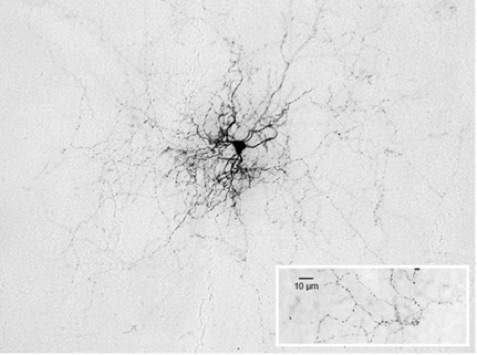
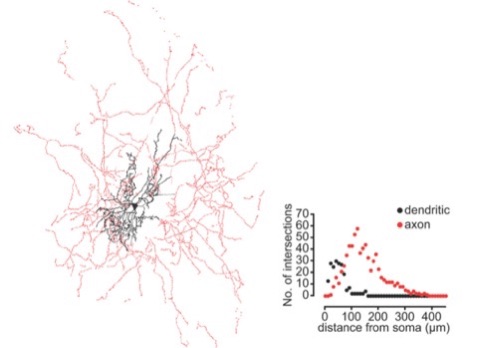
Left. NPY neurogliform (NPY-NGF) interneuron stained with biocytin in vitro. Neuron was identified in an NPY-EGFP mouse. Drawing tube reconstruction of the neuron shown in left panel. Dendrites in black, axons in red. From Ibañez-Sandoval et al. (2011) J. Neurosci., 31:16757-16769. J. Neurosci., 31:16757-16769.
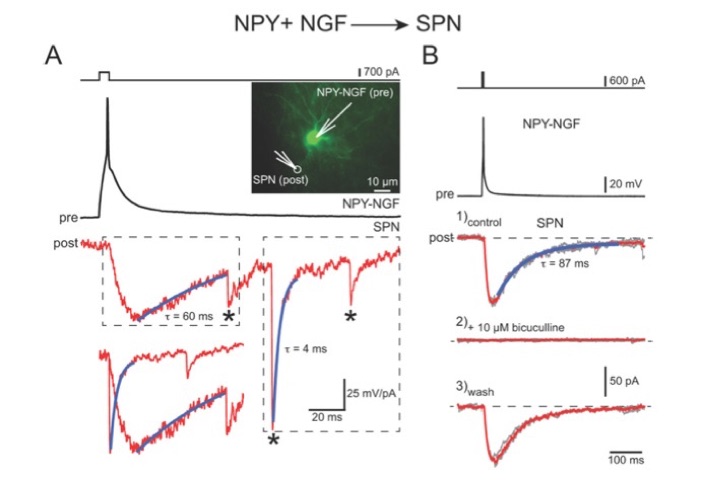
A. NPY-NGF interneurons make GABA IPSCS onto spiny neurons. Compare kinetics with those spontaneous standard GABA IPSCS (asterisks).
B. Slow IPSCs are reversibly blocked by bicuculline. Note very low failure rate of the GABA IPSCS. From Ibañez-Sandoval et al. (2011) J. Neurosci., 31:16757-16769. J. Neurosci., 31:16757-16769.
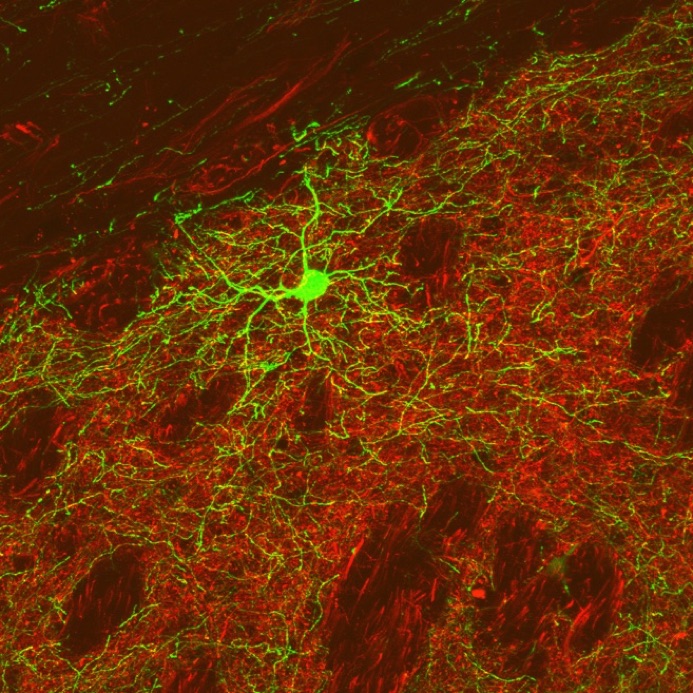
Striatal NPY-NGF interneuron (green) in an NPY-GFP mouse counterstained with thalamostriatal fibers (red) virally transduced with d-Tomato. Confocal image courtesy of Dr. Maxime Assous.

Photomicrographs of a striatal NPY-LTS interneuron stained with biocytin. Inset shows higher order dendrite sparsely invested with spines.
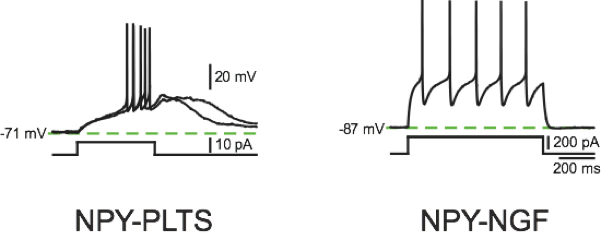
LTS and NGF interneurons exhibit completely different intrinsic membrane properties. From Ibañez-Sandoval et al. (2011) A novel functionally distinct subtype of striatal neuropeptide Y interneuron. J. Neurosci., 31:16757-16769. J. Neurosci., 31:16757-16769.
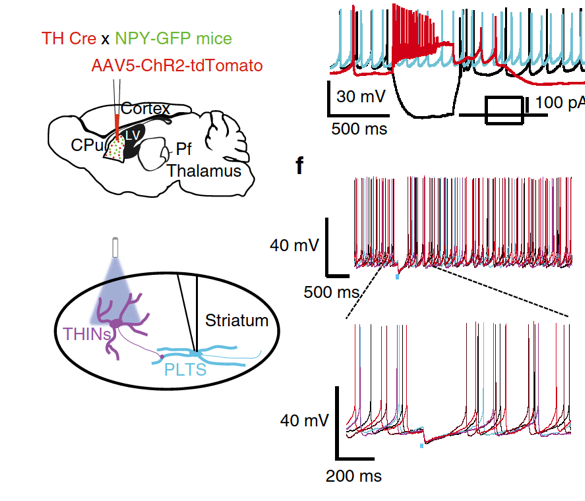
Paired recordings between NPY-NGF interneurons and SPNs. A. Upper traces show intracellular current pulse and a single spike response in a presynaptic (pre) NGF interneuron shown in the inset to the right. Middle trace shows a slow IPSC in response to the spike in the NGF interneuron, followed by three spontaneous IPSCs (asterisks) that exhibit the typical fast kinetics of GABAA IPSCs in SPNs. The slow IPSC has a long rise time as well as an extremely long decay. Bottom trace is an overlay of the two boxed areas in the middle trace for comparison of the rise and decay times of the fast and slow IPSCs. B. Upper traces shows a different presynaptic NGF stimulated to fire a single spike by a brief intracellular current pulse. Lower traces: 1. control slow IPSC in a postsynaptic NPY-NGF interneuron. 2. Slow IPSC is completely blocked by the GABAA antagonist, bicuculline. 3. Wash restores slow IPSC. Ibañez-Sandoval et al. (2011) J. Neurosci., 31:16757-16769. J. Neurosci., 31:16757-16769.
Enter Text
NGF interneurons elicit GABAA slow IPSCs in SPNs
Otogenetic activation of THINs in a TH-Cre::NPY-GF) transgenic mouse slice strongly inhibits an LTS interneuron, completely abolishing spontaneous activity. Assous et al., 2017 Nat. Commun. DOI: 10.1038/ncomms15860

Reconstruction of another LTS interneuron showing the very sparse and extended axonal arborization. Compare to the ultradense local axonal arborization of NGF interneurons shown above. Both LTS neurons from Ibañez-Sandoval et al. (2011) A novel functionally distinct subtype of striatal neuropeptide Y interneuron. J. Neurosci., 31:16757-16769. J. Neurosci., 31:16757-16769I